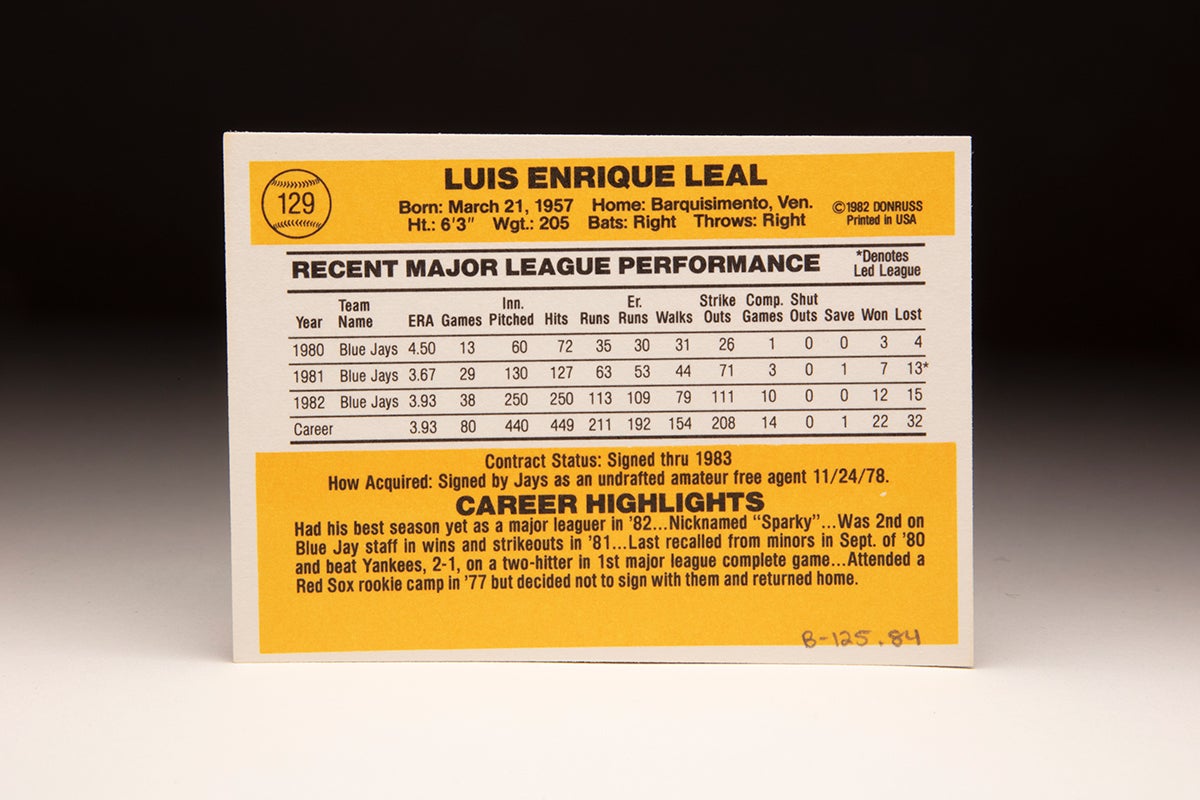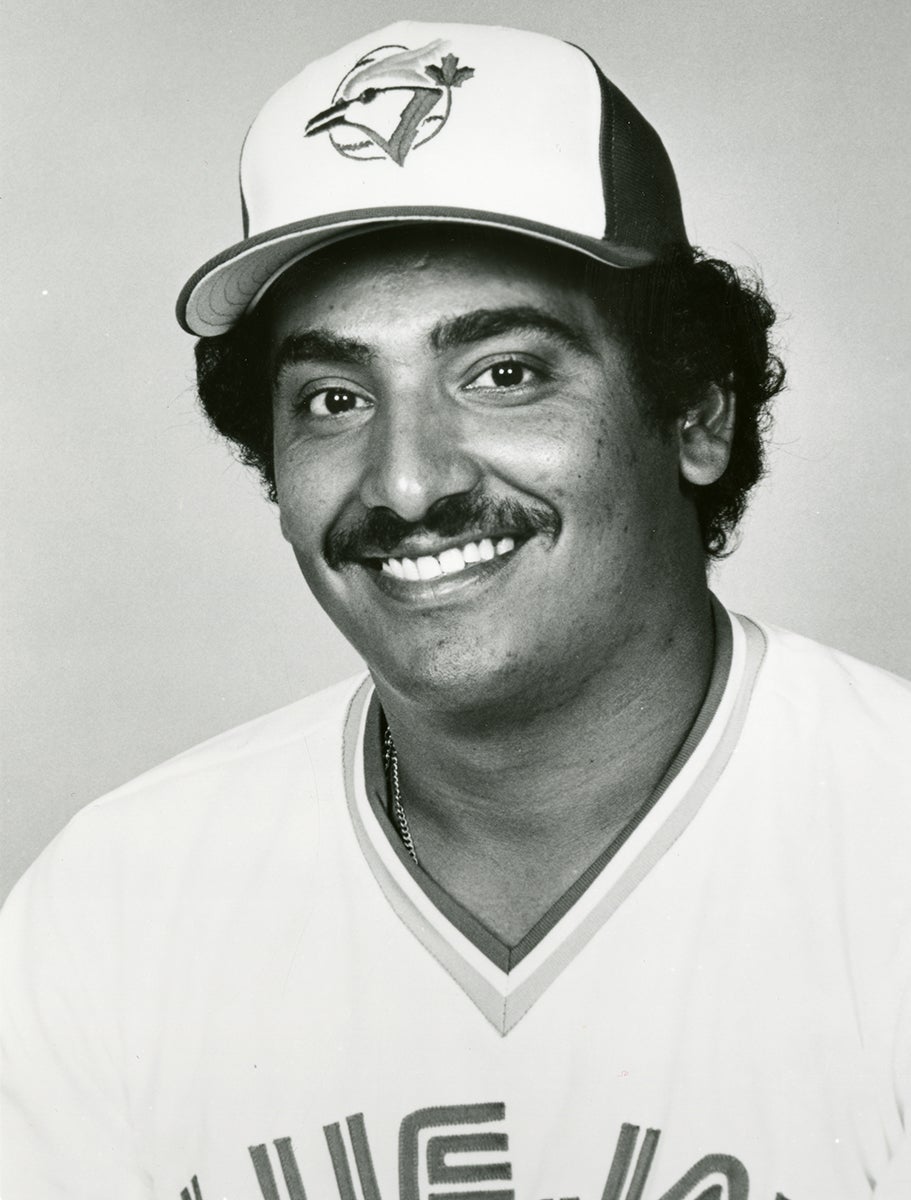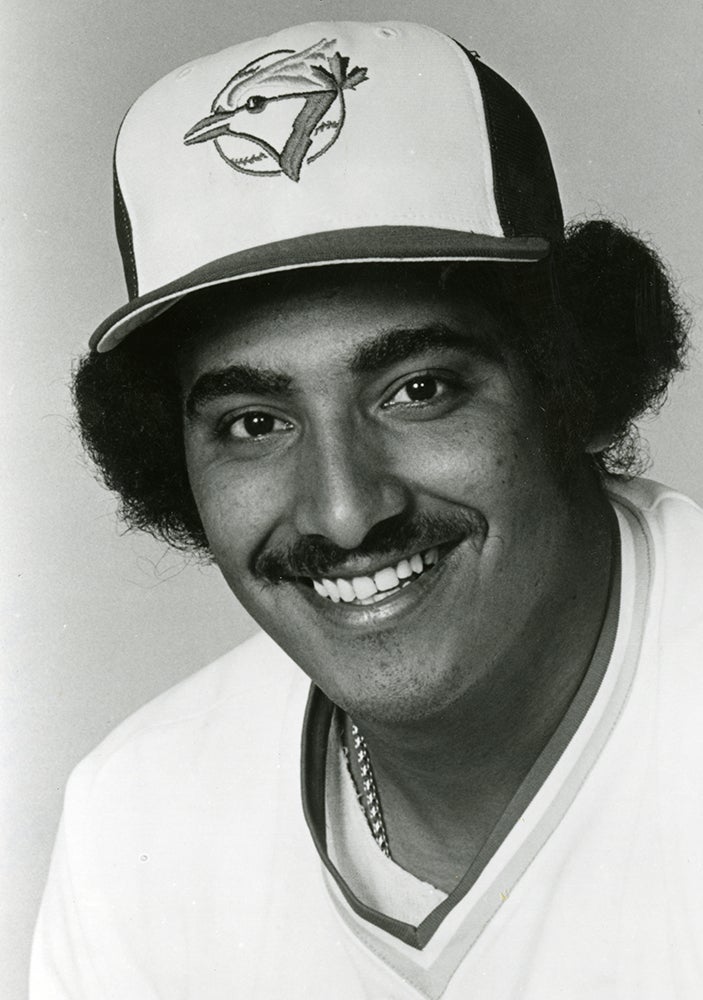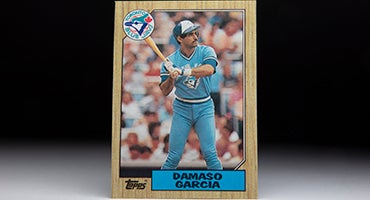#CardCorner: 1983 Donruss Luis Leal
Luis Leal pitched in only six major league seasons, including only three that were full-length campaigns or years where the right-hander spent the entire season in the big leagues.
But for that short time, Leal might have been one of the toughest challenges for any batter.
“Jack Morris was the toughest pitcher I faced,” said former All-Star Mike Easler, a lefty batter who hit .305 off right-handers in his career. “But Luis Leal was close. He’d bust you inside with fastballs and cutters, right under your hands, and I couldn’t get extended on him.”
Few batters could solve Leal at his peak when – along with Dave Stieb and Jim Clancy – he helped give the Blue Jays one of the best young rotations in the game.

Born March 21, 1957, in the agricultural town of Barquisimeto, Venezuela, Leal – one of 11 children – grew up playing soccer and did not participate in organized baseball teams until he was 15. By 1974, Leal was playing for the El Avila amateur team and attracting attention from scouts.
“When I started playing baseball, I was better than everybody on my team, so I moved to a better team,” Leal told the Toronto Star in 1983.
Soon, Leal was playing for the Venezuelan national team in the Central American University Games and the Pan American Games. The Red Sox tried to sign him in 1977 but when the two parties couldn’t come to terms, Leal returned to Barquisimeto University with the goal of becoming a teacher. But he still pitched for the national team and eventually decided to give his athletic career his full attention.
“Every time I went to represent Venezuela, I missed time studying,” Leal told the Star. “I decided it was time to change my career and study to be a baseball player.”
Legendary Latin American scout Epy Guerrero of the Blue Jays followed Leal’s career for years – and for a $7,500 bonus, Guerrero convinced Leal to sign with the Blue Jays.
The 22-year-old Leal began his pro career with Class A Dunedin of the Florida State League in 1979, dominating younger opponents while going 12-2 with a 2.64 ERA in 150 innings. He earned a late-season promotion to Triple-A Syracuse, where he won his only start.
“I was very homesick my first year in Florida,” Leal told the Toronto Star. “I hadn’t been away from Venezuela for more than 20 days before in my life. That year it was seven-and-a-half months.”

The Blue Jays sent Leal to the instructional league after the season before Leal returned home to play winter ball in Venezuela. He reported back to Syracuse in 1980, where he was 6-5 with a 3.27 ERA. The Blue Jays brought him to the majors in late May, and he made six starts before returning to Syracuse and then earning a September call-up to Toronto. On Sept. 18, he defeated the eventual American League East champion Yankees by pitching a two-hitter, allowing only one run over nine innings.
Leal was pressed into a starting role at the last minute when Stieb, who had been scheduled to start the game, was called on to work in the bottom of the 10th inning of a game that resumed before the regularly scheduled contest after it had been suspended the night before with Toronto leading 7-3. Stieb was unable to get the final three outs and allowed four runs in two-thirds of an inning as the Yankees went on to win 8-7 in 13 innings.
“They told me I was pitching,” Leal told United Press International. “I told them to give me the ball.”
The performance set the stage for Leal to earn a spot in the Blue Jays’ rotation in 1981.
“We think he has a chance,” Toronto manager Bobby Mattick told UPI, “to be a heck of a pitcher.”

Leal started the Blue Jays’ third game of the year in 1981 – on the heels of outings by Clancy and Stieb – and earned Toronto’s first win of the year after allowing just two runs while striking out nine Detroit batters in a 6-2 victory. Leal had a hard-luck 3-8 record with a 3.03 ERA when the strike interrupted the season in June and finished the year with a 7-13 record – the most losses in the AL – with a 3.68 ERA.
In 1982, Leal made 38 starts – only Clancy and Baltimore’s Dennis Martínez made more in the AL – en route to a 12-15 mark and 3.93 ERA. With his arsenal of cutters and sliders, Leal induced regular soft contact – striking out just 111 batters in 249.2 innings but permitting only a .396 slugging percentage by opposing hitters.
In 1983, Leal started out 0-3 but righted the ship by going 4-0 in May en route to a 13-12 record and 4.31 ERA over 35 starts.
“His weight is still something we have to watch,” Blue Jays general manager Pat Gillick told the Toronto Star in 1983, referring to the 200-plus pounds Leal carried on his 6-foot-3 frame. “There’s no doubt about Leal’s ability. He’s one of the best in the league – plenty of arm, excellent delivery, deceptive windup.”
The Blue Jays posted the first winning record in franchise history in 1983 with 89 victories, and the team was expected to contend in 1984. Leal got off to a fast start by beginning the year 6-0 before dropping his first decision on June 11 in a 5-4 loss to the eventual World Series champion Tigers.
In his next outing, Leal authored what was perhaps the best performance of his career, shutting out the Red Sox on two hits on June 16 while striking out nine batters.
“Today he could have shut out the 1927 Yankees,” said Blue Jays manager Bobby Cox.
Five days later, Leal again defeated the Red Sox – this time allowing just four hits and two runs over nine innings.
“Two of the best games I’ve ever seen pitched,” Toronto catcher Buck Martinez, who caught both of Leal’s gems, told the Atlanta Journal. “You knew when Luis went out you were going to get a good game.”

After allowing just one run over seven innings in a 4-1 win over Kansas City on Aug. 1, Leal was 12-2 with a 3.09 ERA. Many observers thought he was the leading candidate to win the AL Cy Young Award. But Leal posted just one more win that season and finished 13-8 with a 3.89 ERA. Theories about the slump abounded, ranging from his fastball straightening out to excess weight putting pressure on his balky left knee.
Then in 1985 – with the Blue Jays poised to win their first AL East title in franchise history – Leal went 2-1 with a 3.13 ERA in April before hitting a rough patch in May. By June, he was 3-6 with a 5.75 ERA when the Blue Jays sent him to Triple-A Syracuse one day before his five-year anniversary at the big league level – a status that would have allowed him to reject the demotion and still keep the money from his contact, a deal that was paying him nearly $500,000 per season.
Leal went 6-2 with a 3.91 ERA in 12 starts for Syracuse but was not brought back to the big leagues as the Blue Jays advanced to the postseason.
“I don’t really know what happened,” Leal told the Atlanta Journal. “I don’t cause trouble. I’m not hurt. I can still throw. I don’t know what happened.”
Leal’s June 29, 1985, start against the Tigers – when he allowed three runs over three innings – would turn out to be his last MLB appearance.
Leal spent the entire 1986 season with Triple-A Syracuse, mostly working out of the bullpen and pitching just 76 innings.
On Feb. 2, 1987, the Blue Jays traded Leal and Dámaso García to the Braves in exchange for pitcher Craig McMurtry.
“They told me to go to Syracuse last year to pitch, and I pitched every two weeks,” Leal told the Journal. “I never knew why it happened. It was better for me to get out of there. With Toronto, I was doing nothing.”

But Leal was considered a longshot to make the Braves roster in 1987, and – though he pitched well in Spring Training games – he did not make the Opening Day roster. Per the terms of the trade, the Braves were able to return Leal and his contract – worth almost $1 million over two seasons – to the Blue Jays, which they did on March 27. The Blue Jays then immediately assigned Leal to Puebla of the Mexican League.
“It’s somewhat of a mystery to me because I saw Luis when he was just about untouchable,” Braves general manager Bobby Cox, who managed the Blue Jays from 1982-85, told the Atlanta Journal in the spring of 1987 when Leal was fighting for a roster spot. “Then, all of a sudden…”
Leal wound up pitching five games in the minors with Toronto affiliates in 1987. With one year remaining on his contract, Leal found himself assigned to the minors again in 1988 before the Brewers took a look at him in their minor league camp. But Leal’s achy back forced him to the sidelines, and the Brewers returned him to the Blue Jays.
“I want to go back to the States to play real baseball,” Leal told the AP in Caracas while he was fielding offers from Venezuelan Summer League teams. “If I feel good, I’ll go back soon, but right now I just have to wait and keep a positive attitude.”
But the offer to play in the United States never came despite the fact that Leal pitched effectively in the Venezuelan Winter League for the next few seasons. He finished his big league career with a 51-58 record in 165 games, including a 4.14 ERA.
For a few hopeful years in the early 1980s, however, Leal was the embodiment of the optimism that surrounded the up-and-coming Blue Jays.
“Toronto is the most beautiful city I have ever seen,” Leal told the Star in 1983. “I don’t ever want to move. I want to play here for all my career.”
Craig Muder is the director of communications for the National Baseball Hall of Fame and Museum



